Imagine this: You’re tucked away safely at home while the winds are howling outside during a major power outage. You’re calm and collected because you have your emergency supplies appropriately planned and stored. Among those supplies is your stock of essential emergency fuels. Actions taken in advance have now paid off, as you can maintain heat, cook meals, and keep the lights on despite the circumstances outside.
The secret behind your confidence? Knowing the shelf life and proper storage techniques of different emergency fuels.
This comprehensive guide delves into the lifespan of common emergency fuels, their various uses, and how to store them correctly. With fuels ranging from kerosene and gasoline to firewood and alcohol, you’ll learn how to ensure the effectiveness of these vital resources during an emergency.
Get ready to dive in and empower yourself with knowledge that will keep you prepared, no matter what Mother Nature throws your way.
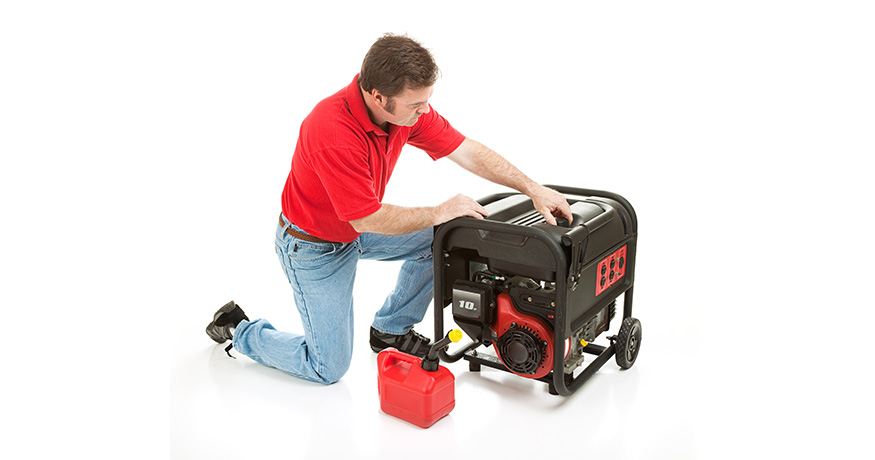
Disclosure:It is important you understand that we may receive commissions when you click our links and make purchases. However, this does not impact our reviews and comparisons. All opinions are our own we pride ourselves on keeping our articles fair and balanced. For more info see our disclosure statement.
Common Emergency Fuels and Their Shelf Life
| Fuel Type | Shelf Life | Important Info |
|---|---|---|
| Kerosene | Up to 5 years | Store in 5-gallon blue containers away from direct sunlight. |
| Gasoline | About 1 year with fuel stabilizer | Store in red gas cans in a cool, dark, and ventilated area. |
| Diesel | About 1 year with fuel stabilizer | Store in yellow gas cans in a cool, dark, and ventilated area. |
| Propane | Indefinite | Store in 1-pound to 30-pound tanks outside in a cool area. |
| Alcohol | Indefinite | Keep in airtight containers. |
| Firewood | Up to 5 years | Seasoned firewood should be stacked neatly with a cover. |
| Charcoal | About 2 years | Store in airtight containers to protect from moisture. |
| Wood Pellets | About 6 months to 2 years | Keep neatly stored in a dry area with less than 10% humidity. |
Kerosene
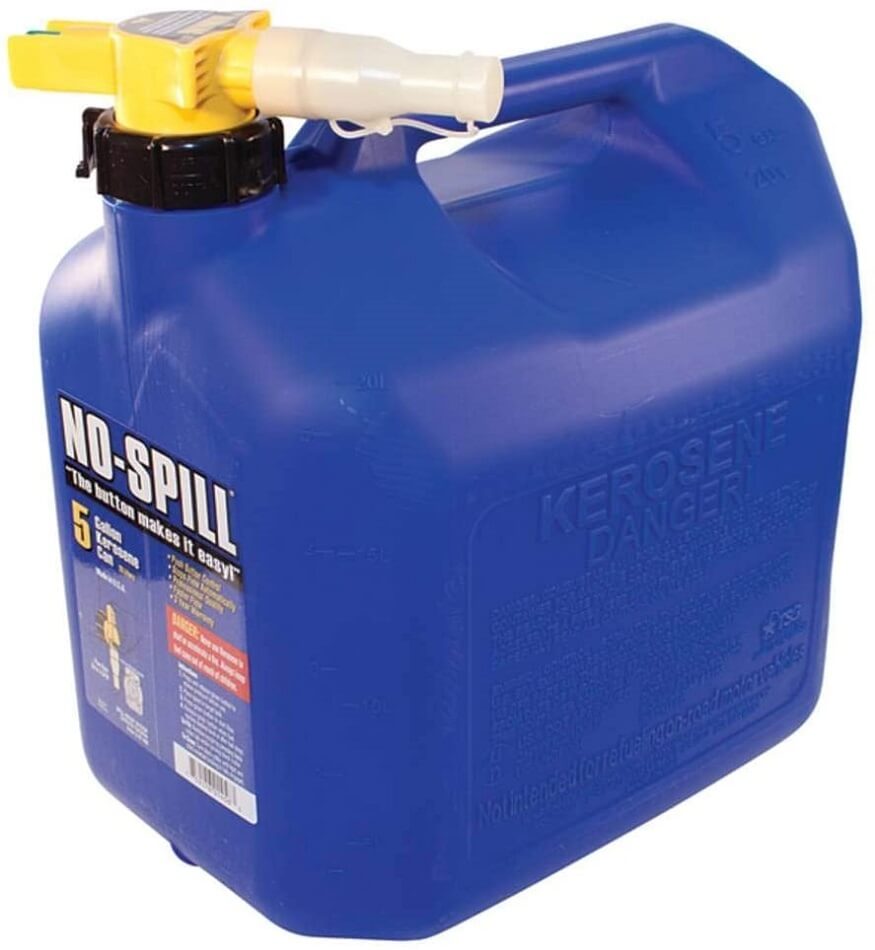
Kerosene is a highly-flammable liquid. It is used in homes as a fuel for heat, light, and power. This type of fuel is incredibly versatile. Its most common uses are fueling oil lamps or furnaces.
How to Store Kerosene
You should store kerosene in 5-gallon blue containers. It is important to only use the right color container, so you don’t accidentally mistake it for gasoline or diesel.
Store kerosene in a shed or garage that is away from direct sunlight, as extended exposure can damage the quality of the fuel.
How Long Does Kerosene Last?
Kerosene has a shelf life of up to 5 years when it is stored in the original container it was bought in or in a kerosene-approved storage.
As kerosene ages, condensation can occur. This can create bacteria and mold which can ruin the quality of the fuel, making it unusable. To prevent this, you should add a fuel stabilizer annually.
What is Kerosene Used For?
You can use kerosene for oil lamps. It is also suitable as a heating fuel, cooking fuel, and even as a cleaning solution. The low cost of kerosene makes it an economical choice for emergency use.
Gasoline and Diesel
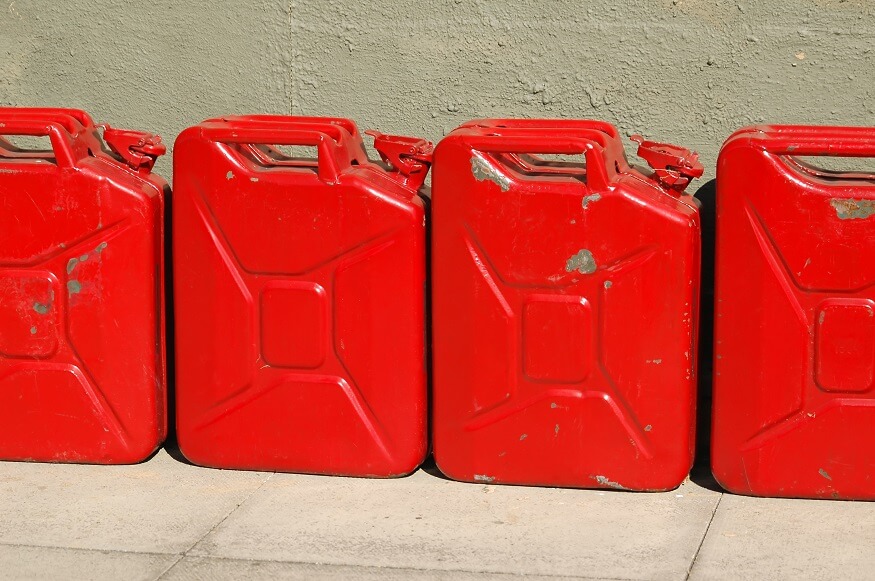
If you have a generator, storing gasoline or diesel should be in your survival list. Having an extra supply can be beneficial, especially when you don’t know when the power will be back! If you have a car that runs on gasoline, you can use the emergency stock as backup.
However, not all generators use gasoline. Some models need diesel. Make sure to double-check if your generator is diesel-powered. Putting the wrong fuel can ruin the motor – just like when you put the wrong fuel type in a car.
How to Store Gasoline and Diesel
Gasoline is stored in red gas cans. You can store gas in a 5-gallon container, but that won’t do you much good in the event of an emergency. It is recommended to have at least 25 gallons of gas to get you through a power outage.
Diesel is stored in yellow gas cans. Like gasoline, diesel comes in 5-gallon sizes. You will need to store more so you’ll have enough for an emergency.
You should store gasoline and diesel in a cool, dark, and ventilated area such as your garage or a shed. Keep the containers out of direct sunlight.
How Long Can Gasoline Be Stored??
Gasoline and diesel have a shelf life of about one year when a fuel stabilizer is added. It is recommended to rotate your storage supply each year in July. This is because fuel blends are different during winter.
To rotate your stock, fill your car with any leftover gasoline to ensure nothing goes to waste. You can then refill your storage cans, add a fuel stabilizer, and mark with the current date and rotation date of one year.
What is Gasoline Used For?
You can use gasoline to power your generator, fuel your car, or run lawn equipment. The best thing about gasoline is if you don’t end up using it for your generator, you have a backup supply for your car or lawn equipment.
Propane
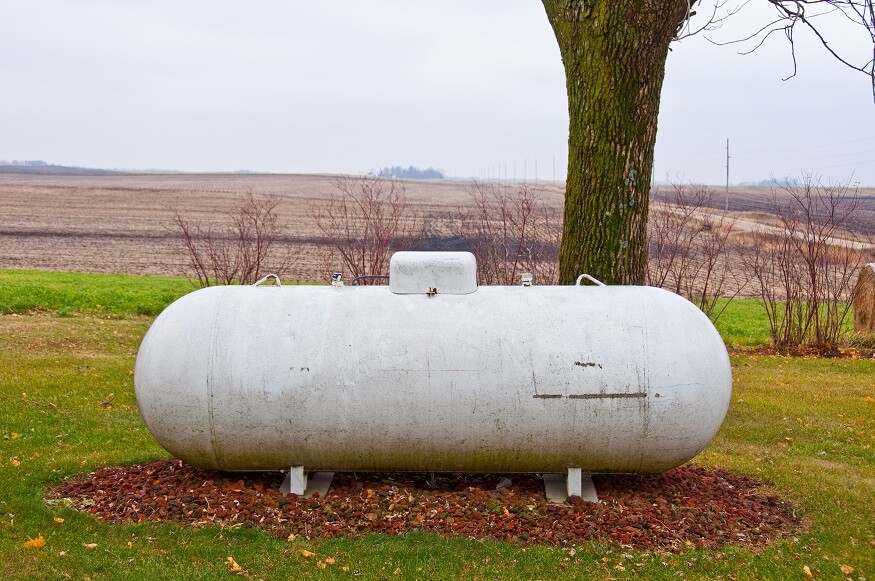
Propane is an extremely convenient, safe, and reliable fuel source. Chances are if you have a propane grill, you already have a small stockpile of propane gas.
How to Store Propane
You can store propane in 1-pound disposable tanks, 5-pound tanks, 20-pound tanks, or 30-pound tanks. A fixed tank can provide more propane storage, however it is important to always conduct maintenance.
Always store propane outside – not in your garage, shed, or basement. You should keep them in an area that is cool. Never expose propane to temperatures above 120 degrees.
How Long Can Propane Be Stores?
Propane has a near indefinite shelf life and will not degrade due to any natural processes. The shelf life is only limited by the container that it is stored in. If there is an expiration date on the propane can, it will normally be about thirty years, and that is only based on the inspection date of the container.
What is Propane Used For?
In the event of an emergency, you can use a propane tank to fire up your grill and cook food. It can most likely fire up your furnace as well, giving you heat inside of your home.
Propane heaters can also be used to heat your garage.
Alcohol
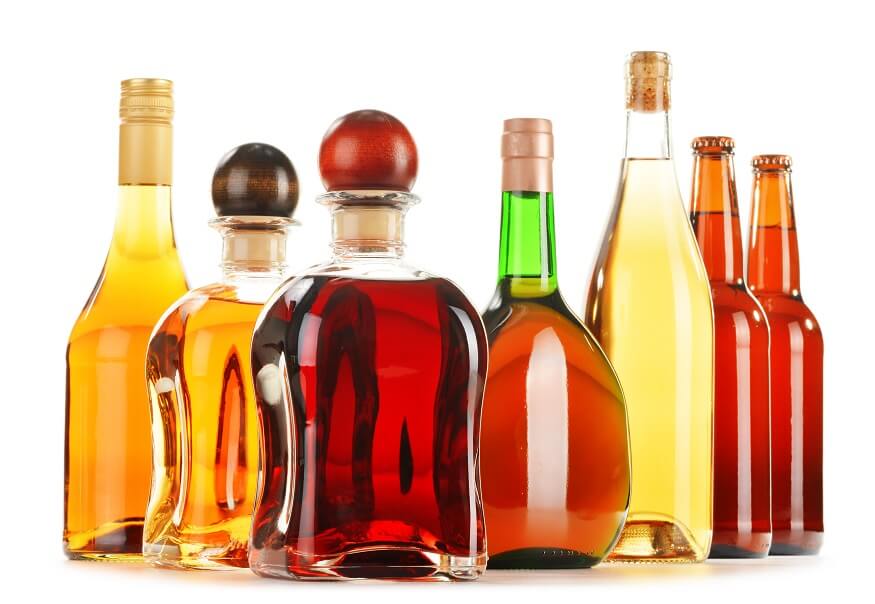
Having alcohol is extremely handy, especially in an emergency. It offers a myriad of uses that you are unaware of.
How to Store Alcohol
Since it is liquid and highly prone to evaporation, you need to keep alcohol in an airtight container. You can simply use the original packaging it came in. However, if its bottle comes with a cork, make sure to store the alcohol horizontally. If it is standing up or in an upright position, the cork can dry out, and thus allow oxygen to enter the bottle, spoiling the alcohol.
Shelf Life of Alcohol
The shelf life of alcohol depends on what kind it is. Alcohol has an indefinite shelf life as long it is unopened, once the seal is cracked it starts to evaporate.
Beer and wine have a shelf life of 6 months to two years. Liquors tend to start breaking down around the two-year mark. Other spirits and moonshines do not expire due to their high alcohol content.
What is Alcohol Used For?
Alcohol can be used to fuel special alcohol stoves. It can disinfect wounds and injuries too. However, not all types of alcohol can do so. For instance, beer is not recommended because it has a low Alcohol By Volume (ABV). You need at least 40% or more.
Firewood
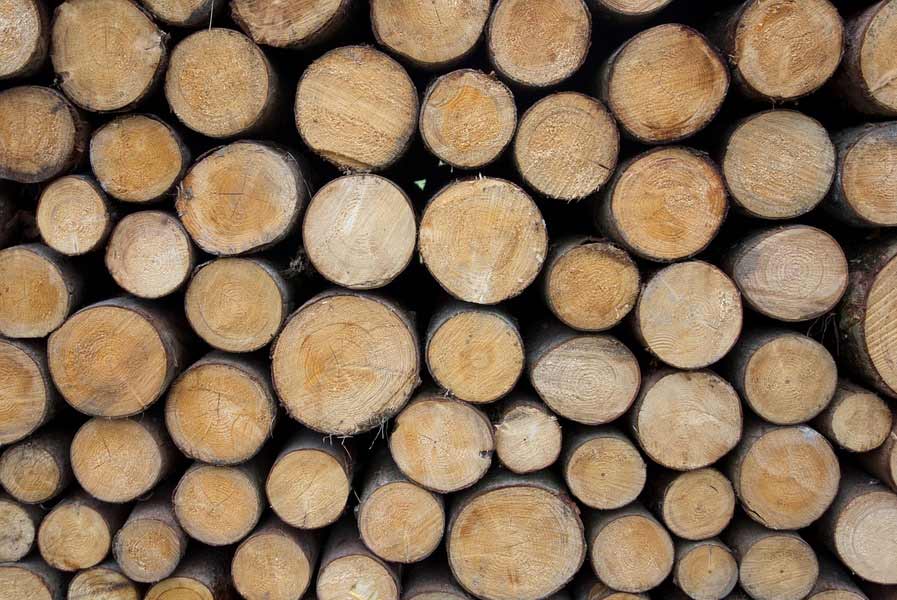
Firewood is a fuel that is as old as civilization itself. It has many uses such as cooking, heating and for providing light.
How To Store Firewood
Wood needs to be seasoned (dried) before it can be burnt efficiently. Seasoning your firewood is as simple as storing it correctly.
Firewood should be stacked neatly with a cover over it to protect it from rain. The sides of firewood should be exposed to fresh air so it can dry properly.
Shelf Life of Firewood
Seasoned firewood can be stored for up to 5 years (depending on the type of firewood), after this the wood starts to decay. You can still burn decayed wood, but the ease of which it will light and the efficiency quickly diminishes.
Charcoal
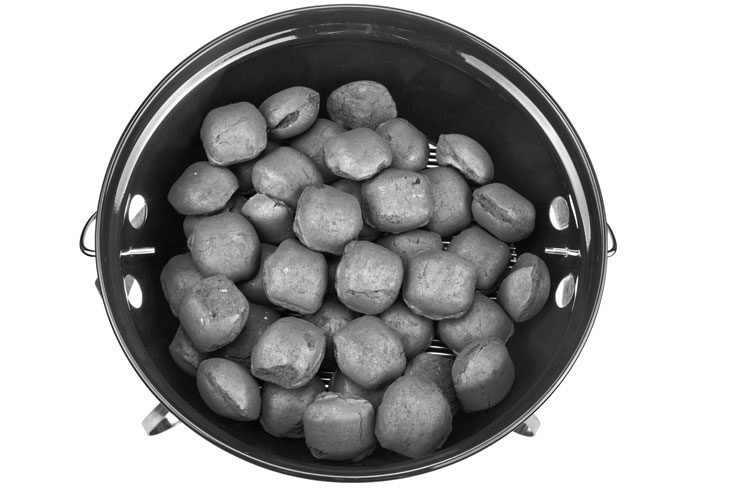
Charcoal is a fuel that was once wood, but has been burned very slowly with very little oxygen. This turns it into carbon – and thus charcoal.
Charcoal is a very cheap emergency fuel that can be used for heating and cooking. It comes in briquettes or lumps and is readily available to purchase.
How To Store Charcoal
Charcoal comes in paper bags, but this is not ideal for long term storage as this does not protect them from moisture in the air (which they will soak up). We recommend emptying your bags into airtight containers that ensure their longevity.
Shelf Life of Charcoal
The shelf life of charcoal depends on how it is stored. If it is stored in the original paper bags then you can expect about 2 years of shelf life. If you have invested in some air tight containers, then shelf life should be indefinite.
If you have got old charcoal that hasn’t been stored correctly, then you can renew it by spreading it out on some concrete on a warm day in the sun. This will dry out the charcoal enough to use it effectively and efficiently.
Wood Pellets
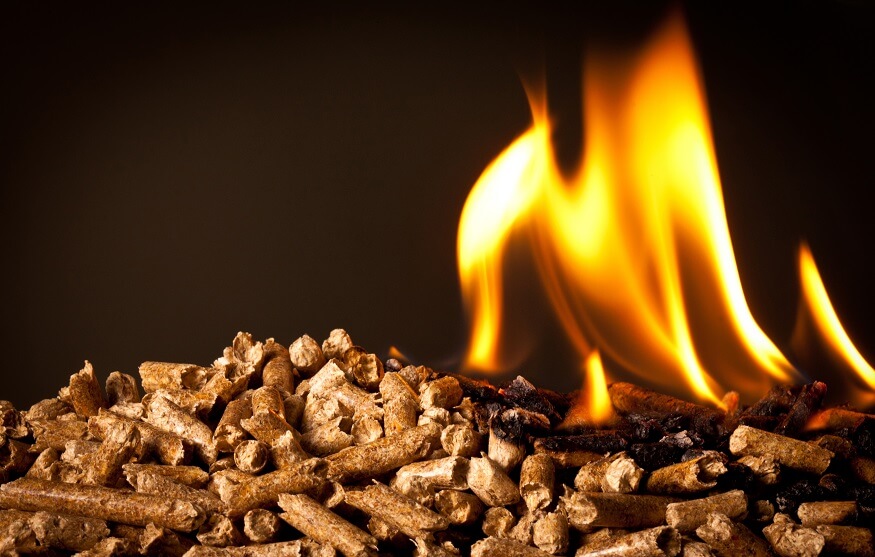
Wood pellets are made from recycled wood and are designed to be used in appliances specifically designed for their use – such as pellet stoves.
At a pinch, you can use them in freestanding stoves, fireplace inserts, furnaces, or boilers. Adding charcoal can make the fire last longer.
How to Store Wood Pellets
Wood pellets are made from wood and are susceptible to the elements. Expose them to moisture, water, and they’re useless.
Keep them neatly stored in an area where they can get sunlight and air. Ideally, you should keep the wood pellets, and store them in an area that is dry and free from moisture.
Shelf Life of Wood Pellets
Wood pellets have an almost indefinite shelf life if kept dry.
But the reality is most people don’t keep them in totally dry conditions – so you can allow a realistic shelf life of about 2 years if you live in an area with less than 10% humidity, and about 6 months if you experience more than 10% humidity.
Most people who use wood pellets for every day heating, buy enough to get them through the winter in bulk before it starts to get cold.
The Wrap Up
Planning for an emergency can be extremely hard because they always come at a time when you least expect it. But, it doesn’t mean you should stop preparing! Complete your survival stockpile by having common emergency fuels too. This information should help you make a decision on what is the best fuel for you to store! For fire prevention tips, you can read this guideline from U.S. Fire Administration.